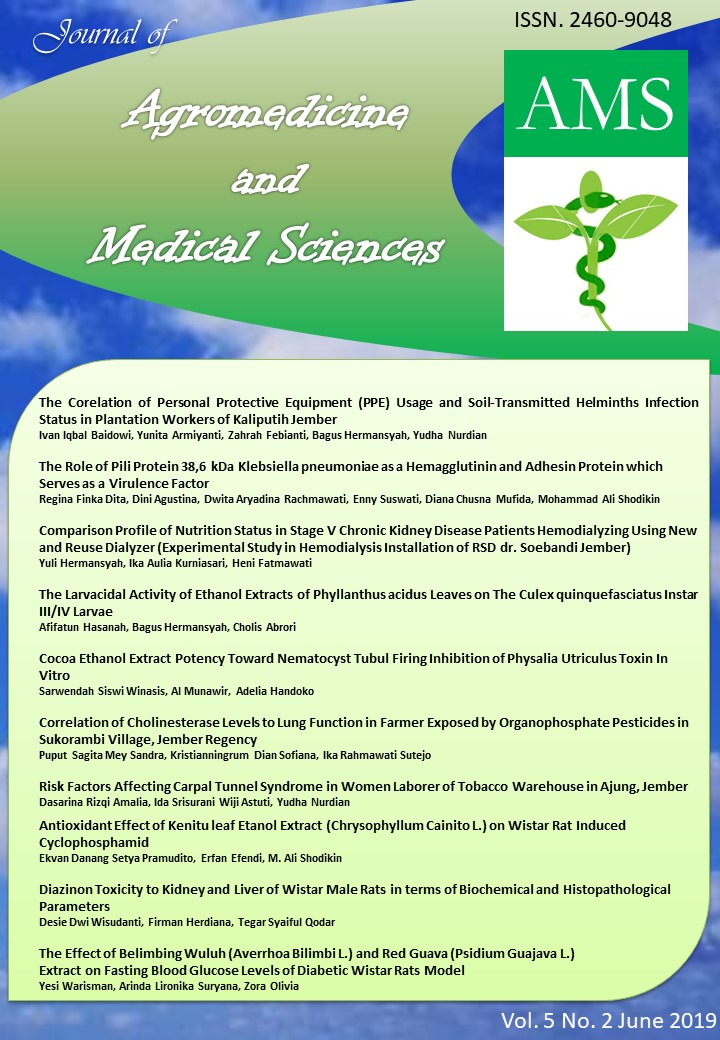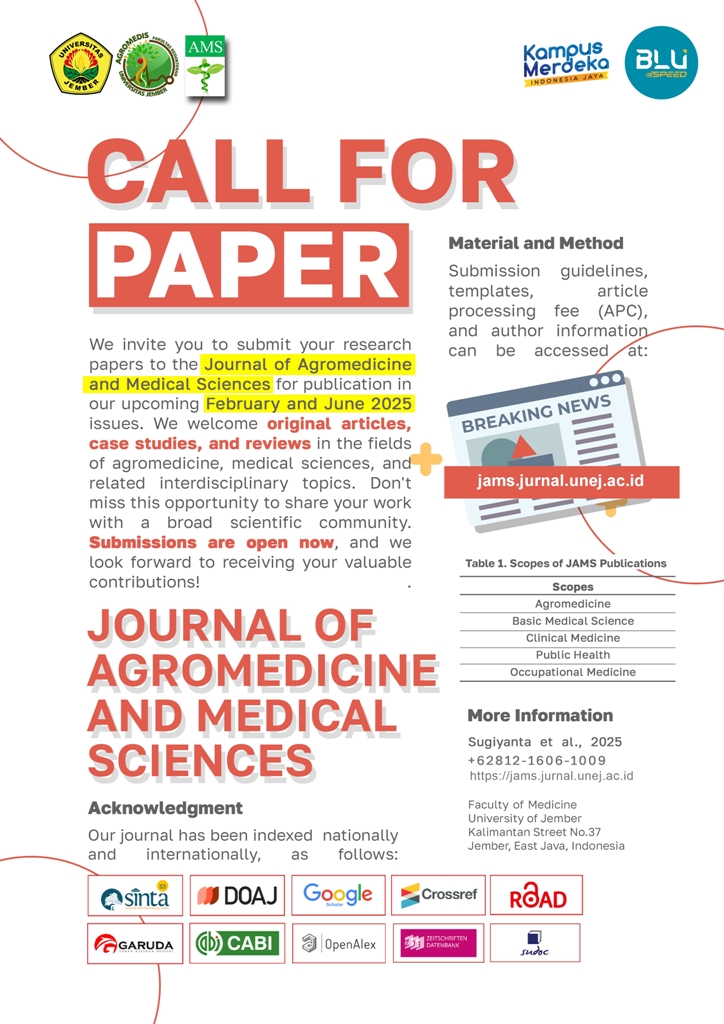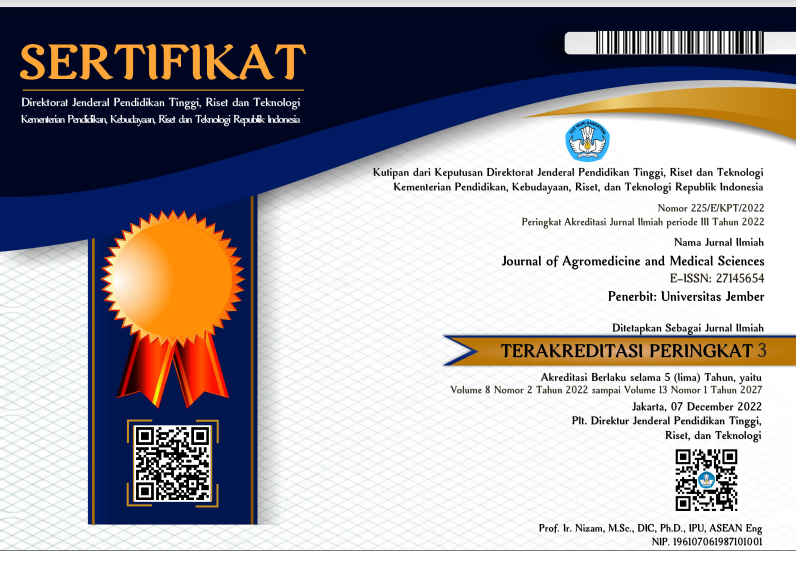Diazinon Toxicity to Kidney and Liver of Wistar Male Rats in terms of Biochemical and Histopathological Parameters
DOI:
https://doi.org/10.19184/ams.v5i2.11575Abstract
Diazinon is an organophosphate type pesticide that is still often used by farmers in Indonesia, with the effect of inhibiting the acetylcholinesterase enzyme, giving rise to the accumulation of acetylcholine in the synapse gap which will lead to incoordination, convulsions and death in insect pests. Apart from having the neurotoxic effects of diazinone it can also damage cells through the mechanism of oxidative stress. Diazinone poisoning has a high potential to cause damage to the kidney organs, because the diazinone excretion pathway and its active metabolites are through the urinary system. The purpose of this study was to determine the effect of diazinone on the liver and renal wistar male kidney. Diazinone dosage of 40 mg / kgBW, given to mice twice a day for 5 days, with each given as much as 5 ml using the gastric sonde. The research sample was in the form of rat blood taken intracardiac to examine BUN levels, serum creatinine, SGOT, SGPT, and GSH, then kidney and liver rats were taken to make histopathological preparations and MDA examinations. Analysis of this research data using the T-test for all variables. There were significant differences between groups of rats given diazinone and groups of rats not given diazinone based on levels of BUN, creatinine, SGOT, SGPT, GSH and MDA. In the group of mice not given diazinone, kidney histopathology was better than those given diazinon.
Keywords: diazinon, pesticides, organophosphates























